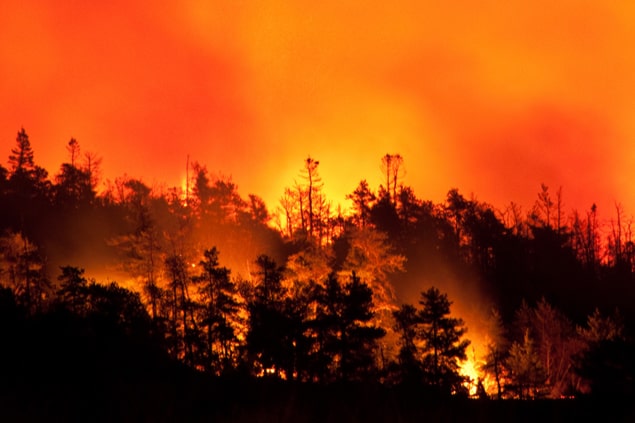
Southern California’s most severe wildfires are generally ignited by humans then driven by the region’s offshore Santa Ana winds. That’s according to US researchers who studied 25 years of data on the incidence of the winds and natural causes of fire such as lightning strikes.
“The frequent occurrence of fires during Santa Ana winds – the worst possible fire weather – is largely a result of human activity,” says Jacob Bendix of Syracuse University, US. “Although fire has always occurred naturally in the region, our data show that Santa Ana-driven fires would hardly ever occur naturally because lightning simply doesn’t strike when those winds are blowing.”
The research highlights the importance of devising new, practical measures to reduce human ignitions, especially at times of the year when the Santa Ana winds are common. “Human ignitions can’t be prevented entirely, because some accidents will occur, as will some arson,” says Bendix. “But investments in trimming the trees next to powerlines, in publicizing the danger of parking a car with a hot muffler on dry grass, in discouraging target shooting near dry vegetation really are important.”
Researchers have understood for some time that Santa Ana winds spread California’s severe fires. Originating from areas of high pressure in the dry interior of the western US, the warm winds flow towards the Pacific without losing heat; dropping in humidity as they descend over mountain ranges.
The hot, dry air that results is ideal for driving flame fronts through the region’s Mediterranean-type climate, which is abundant in flammable scrub vegetation. Since the Santa Ana winds occur most frequently towards the winter, fires generally occur in the autumn, between summer drought and winter rains.
Bendix and Justin Hartnett, also at Syracuse, aimed to find out if natural ignitions are the primary cause of wildfires spread by the Santa Ana winds, or if humans are more to blame. They examined the specific dates over 25 years of intense lightning strikes that ignited fires naturally, along with the timings of Santa Ana winds. Lightning strikes occur on average 52 days earlier in the year than the winds, they found, creating a discrepancy in the timing of autumn fires – a result which could only be realistically explained by manmade ignitions.
Fire is a major threat in southern California, annually costing millions of dollars in property damage and suppression measures, according to the researchers, as well as bringing health and safety risks from both fires themselves and their negative impacts on air quality.
“Given both the severe impacts of wildfires in the region and the difficulty and cost of fighting them, we must understand as much as we can about the patterns of fire occurrence, the conditions under which they occur, how they get started, and how they ‘behave’ once ignited,” says Bendix. “These questions have potential significance for how we allocate resources and develop strategies for preventing and containing wildfires.”
Bendix and Hartnett reported their findings in Environmental Research Letters (ERL).



